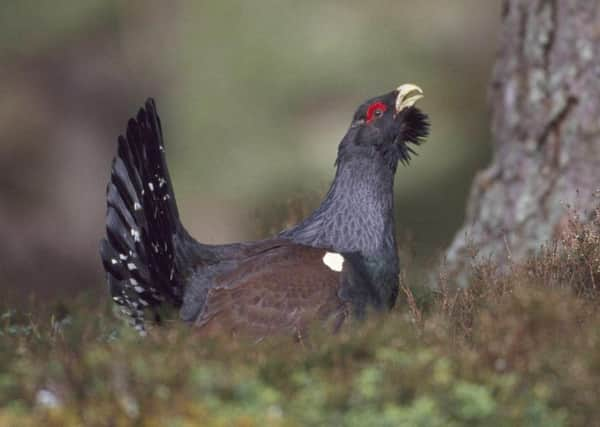'˜Thinning out' forests see capercaillie numbers surge in Strathspey
This article contains affiliate links. We may earn a small commission on items purchased through this article, but that does not affect our editorial judgement.


At the start of the program, only six displaying males were known to be in the area but this figure has now jumped to 43. This could mean that overall around 200 capercaillie could be thriving on the National Forest Estate thanks to the measures introduced by Forest Enterprise Scotland.
The organisation, a subsidiary of the Forestry Commission, began a programme to integrate timber production and recreation with capercaillie conservation in the area a decade and a half ago.
Advertisement
Hide AdAdvertisement
Hide AdSpecies ecologist with Forest Enterprise Scotland, Kenny Kortland, said: “Throughout this period we have actively managed the timber resource and have provided recreational opportunities for over 300,000 visitors every year. We have also carried out ongoing research and this has shown that our forest management creates ideal habitat for the capercaillie.
“These efforts appear to be working because the birds have shown a spectacular increase. In our view, this clearly indicates that caper can prosper in well managed, working forests.
“The key seems to be that thinning the forest to extract timber creates ideal habitat for capercaillie chicks, because breeding success has been high by contemporary standards.”
The Forest Enterprise Scotland success is in stark contrast to what is happening elsewhere in the country, where the capercaillie population continues to decline rapidly.
Wildlife experts say it is noteworthy that capercaillie numbers are increasing at a time when numbers of potential predators have too. They believe that each of the predator groups are naturally keeping numbers down which in turn has had positive spin-offs for the capercaillie.
Mr Kortland said: “We think that the various predators are controlling each other and this allows the capercaillie to thrive. For example, goshawks are recent colonists of these woods and they are eating a lot of crows, which eat capercaillie eggs. Similarly, foxes prey upon pine martens, which eat capercaillie eggs and young.”
Outwith Strathspey – which is now seen as the iconic species’ last refuge – both population and range of capercaillie have fallen hugely over the last few decades.
Capercaillie populations have plummeted from over 10,000 pairs in the 1960s to less than 1,300 birds in 2011.
DOWNLOAD THE SCOTSMAN APP ON ITUNES OR GOOGLE PLAY